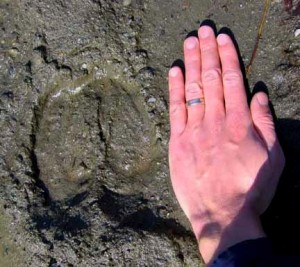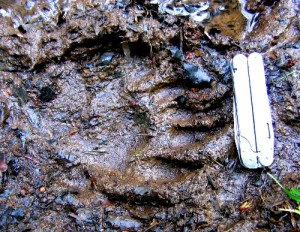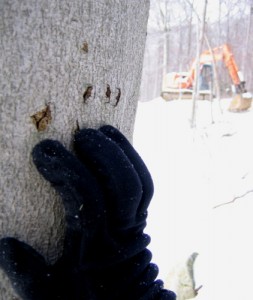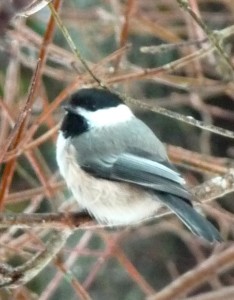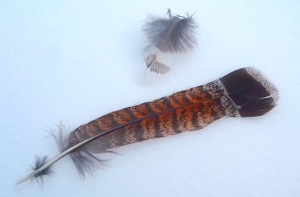What was that just ahead, in that puddle?
Walking up the paved path, I looked hard, trying to make sense of what I was seeing. It had been raining hard for two days, and gusty. Anything light enough to be caught by the wind could have blown about and settled here. A couple of plastic bags, perhaps.
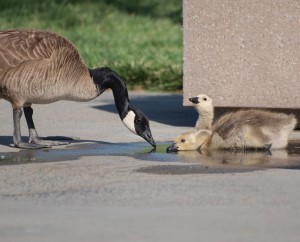
On a pond, I would have recognized the shapes and colors. Here, though, in just a few inches of water, at the intersection of heavily traveled asphalt footpaths on a university campus?
Ducks. A pair of mallards, heads tucked under wings.
I walked past, went thirty yards, then came back. A few feet away, I squatted down to look more closely. Noticing me, the ducks lifted their heads and quacked. As soon as I stood and moved off a few paces, they settled back into their afternoon nap.
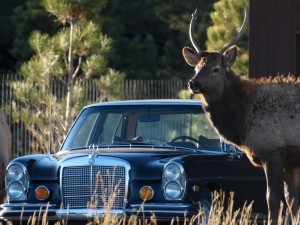
Something about the scene felt strange.
In part, it was aesthetic prejudice, the same kind of distaste I feel when I hear of bears habituated to pawing their way through landfills. In my imagination, wild ducks paddle along river banks and dabble among cattails. They don’t belong in asphalt-bordered puddles.
But something else bothered me, too. The mallards were completely unconcerned by the proximity of humans. Like zoo animals, they seemed to have lost their wildness.
What do we mean, though, when we say that creatures are “wild?”
Do we mean that they are wary of humans? That they see us as potential predators? Or, if large and carnivorous, as potential prey? Might there be a better, less anthropocentric, measure?
Are creatures who spend their lives in environments of human artifice—and who become accustomed to us in the process—still “wild?”
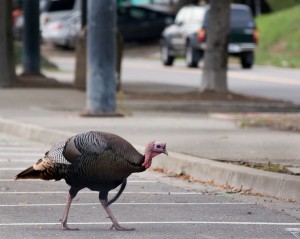
I wonder whether animals can feel it when their wildness slips away. I wonder whether they sense, as some humans do, that it leaves in its wake a forgetfulness—about who we are and where we belong.
And I wonder if wildness is ever truly driven out of any of us, or if it merely slumbers.
© 2010 Tovar Cerulli

